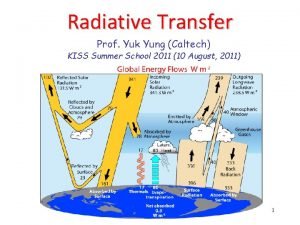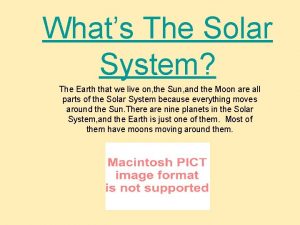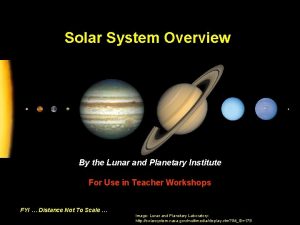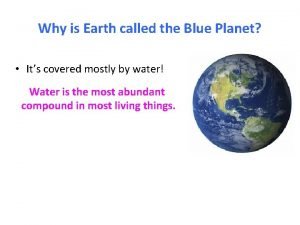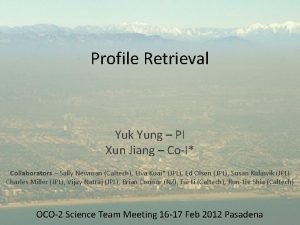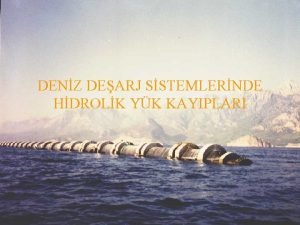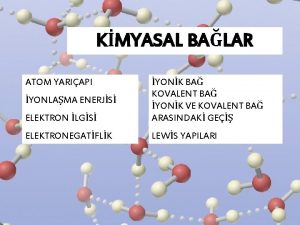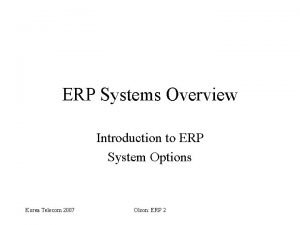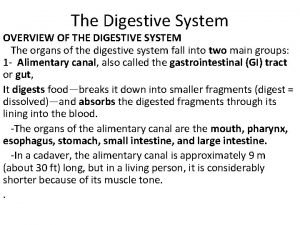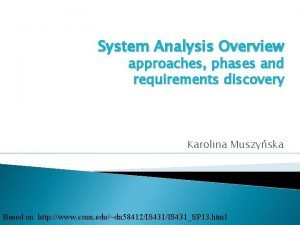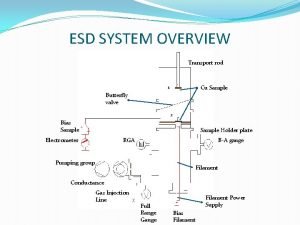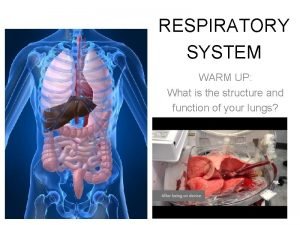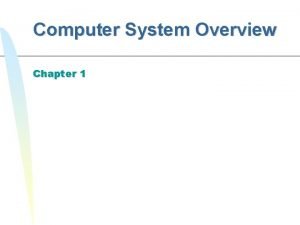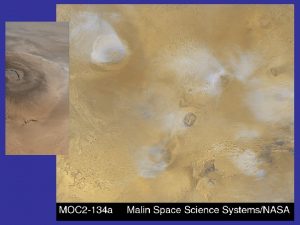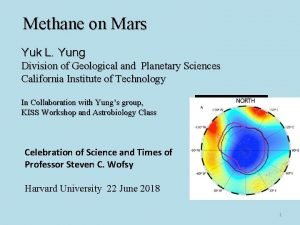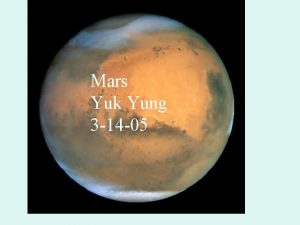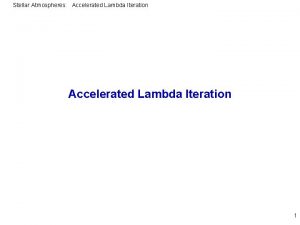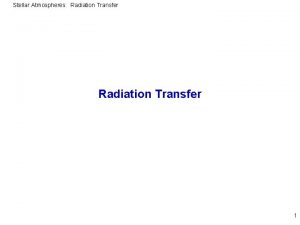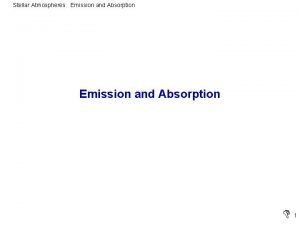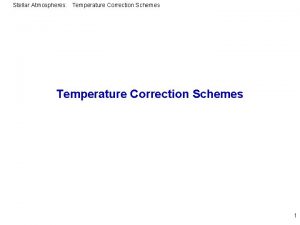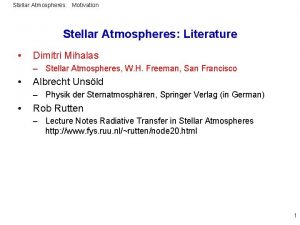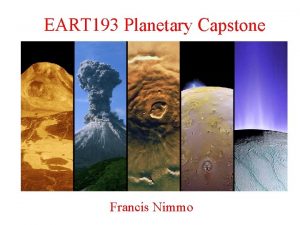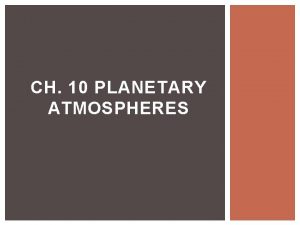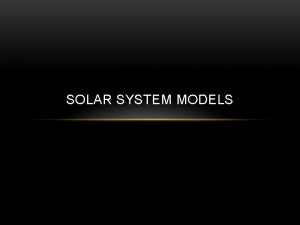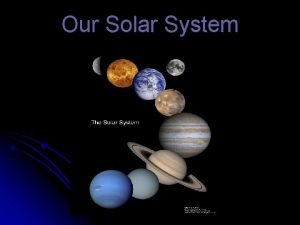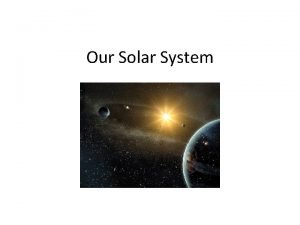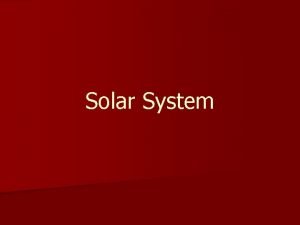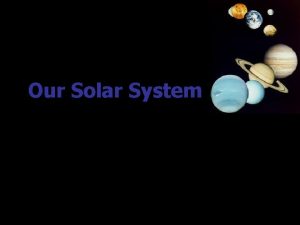Overview of Solar System Planet Atmospheres Yuk Yung
































![[Friedson et al. , Icarus, 2002] [Friedson et al. , Icarus, 2002]](https://slidetodoc.com/presentation_image_h/35e62865430e7e6b1b89049d434bcf9f/image-33.jpg)












- Slides: 45

Overview of Solar System Planet Atmospheres Yuk Yung GPS Caltech Sagan Exoplanet Summer Workshop Jul 20 2009

Today’s Outline v Origins v Giant planets v Small bodies v Terrestrial planets v Conclusions

Atmospheres of the Solar System • Giant planets – – • Primary atmospheres (H 2, He, CH 4…) Little evolution (no surface, little escape) Terrestrial planets (Earth, Venus, Mars, Titan) – – • Secondary atmospheres (CO 2 / N 2, N 2 / O 2, N 2 / CH 4) Outgassed and strongly evolved (escape, surface interaction) Tenuous atmospheres (Pluto, Triton, Io, Enceladus) – • In equilibrium with surface ices or internal sources Exospheres (Mercury, Moon, other Galilean satellites) – Solar flux or solar wind action on surfaces




Big Bang!





Today’s Outline v Origins v Giant planets v Small bodies v Terrestrial planets v Conclusions

Equilibrium vs disequilibrium species in Giant Planets At the relevant T, NH 3 is thermodynamical equilibrium form of N In principle NH 3 / H 2 gives the N/H ratio … but PH 3 is NOT the equilibrium form of P Competition between chemical destruction and vertical convective transport Quench level : where tchem ~ tdyn Occurs at T ~1200 K for phosphine Observed PH 3 abundance still gives P/H ratio !

Saturn Jupiter NH 3 NH 4 SH H 2 O

Comets are sources for atmospheres HST Noll et al. 1995 16 -23 July 1994 JCMT 15 -m Moreno et al. 2003 1995

Methane photochemistry in Giant Planets (a recent view…) Moses et al. 2000 (Saturn)









Today’s Outline v Origins v Giant planets v Small bodies v Terrestrial planets v Conclusions

Spectroscopy from recent space missions: the 3 -D view Titan Cassini CIRS/(R=0. 5 cm-1) Study of couplings between chemistry and dynamics … but no new detections (except many isotopes)…

In situ measurements: the chemical complexity of Titan’s upper atmosphere from Cassini / INMS


In situ measurements: methane profile and meteorology in Titan’s atmosphere from Huygens Methane drizzle on Titan (Tokano et al. 2006)

Today’s Outline v Origins v Giant planets v Small bodies v Terrestrial planets v Conclusions


![Friedson et al Icarus 2002 [Friedson et al. , Icarus, 2002]](https://slidetodoc.com/presentation_image_h/35e62865430e7e6b1b89049d434bcf9f/image-33.jpg)
[Friedson et al. , Icarus, 2002]

Probing below Venus’ clouds H 3+ on Jupiter FTS/CFHT, R= 25000 Bézard et al. 1989 The uppermost clouds form a curtain and by day reflect sunlight back to dazzle us. By night, however, we become voyeurs able to peep into the backlit room behind D. Allen, Icarus, 1987




OCS


Mars: discovery of atmospheric water in 1963 Mars Water cycle on Mars R ~100000 Detection of H 2 O on Mars (Spinrad et al. 1963) at 0. 82 micron: “Watershed” discovery

Mars’ atmosphere: basic chemistry * Detection of CO (1968) O 3 (1971), and O 2 (1972) * Detection of O 2 1. 27 emission in 1976 tracer of ozone (and not vice versa!) *CO 2 + h CO + O *O + M O 2 *O 2 + O + M O 3 *H 2 O + h OH +H *CO + OH CO 2 + H (stability of atmosphere) *OH HO 2 H 2 O 2 (not detected before 2005) Noxon et al. 1976

Conclusions A fundamental understanding of chemistry in planets has been achieved Common photochemistry: hundreds of molecules, thousands of reactions Similar Processes: Catalytic cycles, evolution, hydrodynamic escape, thermal inversion

Acknowledgements • NASA and ESA • Yung’s Group at Caltech • Lellouch’s review 2008 • Meadows et al. 2008 • Yung and De. More (1999) Book

Back-up slides

 Yuk yung caltech
Yuk yung caltech What are terrestrial planets made of
What are terrestrial planets made of Slidesgo
Slidesgo Whats the biggest planet in the solar system
Whats the biggest planet in the solar system Lpi
Lpi Why is the earth called the blue planet
Why is the earth called the blue planet Moti yung
Moti yung Ichki kuchlar faktorlari
Ichki kuchlar faktorlari Materiallarni sinash mashinalari
Materiallarni sinash mashinalari Richard seow yung liang
Richard seow yung liang Yung koprowski
Yung koprowski Raylene torrent
Raylene torrent Xun jiang
Xun jiang Moti yung
Moti yung Pose estimation
Pose estimation Vclassdojo
Vclassdojo üçgen yayılı yük moment diyagramı
üçgen yayılı yük moment diyagramı Hcl lewis gösterimi
Hcl lewis gösterimi Yersel yük kayıpları
Yersel yük kayıpları Bilişsel yük kuramı ve çoklu ortam tasarımı
Bilişsel yük kuramı ve çoklu ortam tasarımı Belden yaralanma veya rahatsızlanma riski en düşüktür
Belden yaralanma veya rahatsızlanma riski en düşüktür Yersel yük kayıpları
Yersel yük kayıpları Ng yuk secondary school
Ng yuk secondary school Kovalent yarıçap
Kovalent yarıçap Noodle glisemik indeks
Noodle glisemik indeks Coulomb yasası k sabiti değeri
Coulomb yasası k sabiti değeri Wholsale solar
Wholsale solar Solar energy is free. solar is inexhaustible
Solar energy is free. solar is inexhaustible Erp 2 systems
Erp 2 systems Content database software
Content database software Objective of computerized accounting system
Objective of computerized accounting system Ductus parotideus
Ductus parotideus Crtd sap
Crtd sap Operating systems overview
Operating systems overview Non functional requirements for gym management system
Non functional requirements for gym management system Exercise 38
Exercise 38 Set associative mapping in cache memory
Set associative mapping in cache memory Computer memory system overview
Computer memory system overview British school system overview
British school system overview Financial intermediaries
Financial intermediaries British school system overview
British school system overview System design
System design System design overview
System design overview System overview sample
System overview sample Lungs 3 lobes
Lungs 3 lobes Computer system overview
Computer system overview
